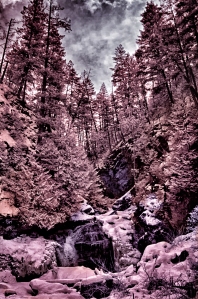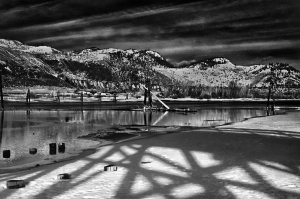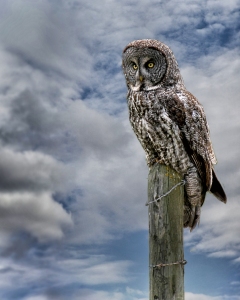The discussion about manipulating an image, or altering it, from the original capture has been going on ever since I began working as a photographer for the Los Angeles Office of Education in the 1970s. Nowadays its called “post-processing”, and in the past we just called it “working in the dark room” when the majority of photographers were handing their undeveloped film over to a film lab and hoped the results would be worth keeping.
At that time, and as exists now, there were those who that claimed straight from the camera was the only true photography. I recall being accused of being unfair at a local exhibition around 30 years ago, because I used exotic photographic papers, hand retouched my prints, and mixed my own chemicals.
As I said, the discussion on right out of the camera vs. alteration of the original is still going strong, however, the beauty of this exciting medium is that there is no one-way to capture an image.
Photojournalists and street photographers like Margaret Bourke-White, Henri Cartier-Bresson, Robert Capa and Dorothea Lange documented events and life as it was at a particular time. As photojournalists and street photographers still are. And as to that type of photography, I absolutely agree, any type of alteration is sacrilege. But I need to introduce those righteous photographers that decry alteration of the negative, print, or digital file, to icons of photography like Andy Warhol, Jerry Uelsmann, and Duane Michals, to name only a few that pioneered different techniques in this ever-changing medium of photography.
Documentary, representational, or candid photography is used to chronicle significant and historical events attempting to capture reality. Fine art photography is the vision of the photographer or artist. And restrictions as to how the image is finally produced do not, and should not, apply.
Modern technology allows much easier creativity for those who wish to use it. That might be nothing more that purchasing the camera with the best sensor, and mounting the sharpest lens on it, and with patience and practice learning to make exposures that are as close as possible to reality. Or it might be using that same camera is nothing more than the first stage of many in an extended and manipulative process.
As to the debate, should image-editing software be used to alter the image, or should the image be left as an unaltered record of the scene? I think that depends on the goals of each photographer.
As always, I really appreciate any comments. Thanks, John
My website is at www.enmanscamera.com




As you said, in this debate there is no right answer. For me altering or enhancing a photograph is the expression of my soul and I feel a great freedom when I do it.
LikeLike
Yes I agree Judition. And limiting the final image to what some camera companies technician decided removes that freedom of experssion.
LikeLike
In our times, altering images has been used not for art but to further political interests or goals, like the recent removal of his uncle from one of Kim Jong Un’s photo, or the doctoring of photos taken during conflicts to portray one side or the other as vicious or inhumane. I don’t think we should applaud or even condone that.
LikeLike
Lots of bad things have been done with good products.
I regularly remove people or add people to images for my customers. I once did that using magnifying glasses, dye and fine tipped brushes. Now I use photoshop.
LikeLike
The camera sees an imperfect representation of what the photographer’s eyes saw.
Post-processing is often done by the photographer to recreate what he or she saw. That seems a legitimate purpose. When changes are made for political ends or fraudulently, that is like forgery. When changes are made to show the world differently, but not fraudulently, that is artistic impression.
The whole discussion can be made so complex it makes my head hurt!
LikeLike
Derek you wrote, “The camera sees an imperfect representation of what the photographer’s eyes saw.” I like that.
Somehow my article on my opinion regarding in camera only or post production got changed to what is possible with today’s digital cameras and computers.
Social conscience is for someone else’s blog.
LikeLike
lovely!
LikeLike
Thank you Blank.
LikeLike
I like both sorts of photography, I find ‘playing’ with my photo’s is fun and makes me feel ‘arty’ 🙂 and I also like taking candids and documenting things, which only need minimal enhancements if any, like having my cake and eating it, else why buy a cake!? 😀
Love the infra red and the owl.
LikeLike
Ms. Fraggle, Your words are perfect. as I read them I thought…me too! And I a happy you liked my altered images.
Thank you so much for taking a moment to comment.
LikeLike
I’ve read you post several times and each time I finish with the same comment.As your last phrase has said. ” The finish goal of each photographer ” I am not on any ones list of being a great photographer nor shall I ever reach that plato ,but my finished photo always amazes me and I try my best to achieve a better level on the next photo , I enjoy photography.
LikeLike
You have it right….in the end, it is all about enjoying this exciting medium.
If you exchange the word “artist” for “photographer” everything becomes so much easier. As an artist one continually strives to reach another (as you wrote) level. When I started pointing my camera so many years ago it was all about being creative. When we bumped into each other on that nice fall day we never broached the subject of great photography. But we talked a lot about fun photography and walked a lot doing fun photography.
LikeLike
Yes Sir, I remember that day quite clearly, you commented on my spraying fine water drop on a spiders web and we both agreed in principal on the imagination of the photographer. I still like your written post ,it’s open to each persons view .
LikeLike
I am glad you are liking my photography articles,and thanks for taking the time to comment.
Gosh, one of these days I expect we will get together to wander with our cameras again.
LikeLike
After post processing, if the image approximates what your eyes saw at the moment you took the picture, OK!
If your image, for example, turns out to be a vomit of colours, or you’ve been processing one image for what seems like a long period of time, perhaps it’s time to stop and reevaluate the photo.
I find these days, many people rely on post processing to make a great photo instead of trying to create the best possible image in camera. In my opinion, most photos will need at least some minor adjustments; it is a matter of knowing when to stop and having an efficient workflow that will generate quality work in a reasonable timeframe.
LikeLike
I do agree with your comment, “many people rely on post processing to make a great photo instead of trying to create the best possible image in camera.”
Although, I think it depends on how a photographer or artist is using the medium. Photographers like Jerry Uelsmann, and Duane Michals to name only two, extend photography beyond what you wrote about.
I, like I expect you do, try to get the best possible image out of camera. However, I always make a decision as to how that image will be finished. and how I finish that image always hinges on how it is to be used.
My cameras include an infrared modified Nikon. With camera that I follow no rules, as in the first image in my post.
LikeLike